 A Native American flag flies over the encampment at Eagle Rock on Wednesday, May 5, 2010. Click on photos for larger versions. (Photos by Keweenaw Now unless otherwise indicated)
A Native American flag flies over the encampment at Eagle Rock on Wednesday, May 5, 2010. Click on photos for larger versions. (Photos by Keweenaw Now unless otherwise indicated)EAGLE ROCK -- Visitors to Eagle Rock, a sacred site for the Anishinaabe (Ojibwa) people, can't help but feel it is a special place. Several generations are coming together there to keep the sacred fire burning for a common purpose: To convince anyone who needs convincing that Eagle Rock, located on the Yellow Dog Plains near pristine trout streams that empty into Lake Superior, is not a suitable site for the sulfide mine known as the "Eagle" Project -- proposed by the multinational mining company Rio Tinto and its subsidiary Kennecott Minerals.
 An eagle feather hangs near the sacred fire at Eagle Rock. It was sent by a supportive Native American friend of Charlotte Loonsfoot of KBIC (Keweenaw Bay Indian Community), one of the initiators of the occupation of the sacred site. (Photo © 2010 and courtesy Joanne Thomas)
An eagle feather hangs near the sacred fire at Eagle Rock. It was sent by a supportive Native American friend of Charlotte Loonsfoot of KBIC (Keweenaw Bay Indian Community), one of the initiators of the occupation of the sacred site. (Photo © 2010 and courtesy Joanne Thomas) In fact, not only is Kennecott preparing for construction on leased public land without all the required permits, the company's workers are reportedly using heavy equipment in the vicinity of Eagle Rock, much closer than the 500-feet perimeter required by law for safety .
Charlotte Loonsfoot of KBIC (Keweenaw Bay Indian Community) is one of three women who initiated the occupation of Eagle Rock after hearing of the arrest last week of Cynthia Pryor, Sulfide Mining Campaign director for the Yellow Dog Watershed Preserve.*
 Charlotte Loonsfoot, Keweenaw Bay Indian Community (KBIC) member, at Eagle Rock on Wednesday, May 5, 2010.
Charlotte Loonsfoot, Keweenaw Bay Indian Community (KBIC) member, at Eagle Rock on Wednesday, May 5, 2010. "We're setting up tents. We're getting ready to have ceremonies," Loonsfoot said on Wednesday, May 5.
However, the usual quiet atmosphere of Eagle Rock, which makes it a fitting place for spiritual ceremonies, has been interrupted by the noise from a very large drill that is being operated not only in the daytime but all night, while shining floodlights on the Eagle Rock encampment.
"We're getting used to it," Loonsfoot said. "We adapt very well."
Loonsfoot said she thought the company might be testing the drill.
"I told Kennecott today that I'm a woman and I have to protect our water. That's my job as a woman," Loonsfoot noted. "And while we're doing that we can learn our culture and language better."
On Wednesday afternoon, campers, both Native and non-Native, sat around a second fire -- a campfire for cooking. They chatted and joked with the young cook, who prefers to be identified only as E Halvorson, while they waited for the salmon feast he was cooking over the open fire.
 Sitting around the campfire at Eagle Rock, waiting for the salmon, are, from left, Laura Furtman, formerly of Wisconsin and now of Duluth, Minn.; Billy Michaelson of Ishpeming; Chalsea Smith of KBIC, Kristin Hilts (standing) of Chassell; and E Halvorson of KBIC, the group's designated cook for Wednesday, May 5.
Sitting around the campfire at Eagle Rock, waiting for the salmon, are, from left, Laura Furtman, formerly of Wisconsin and now of Duluth, Minn.; Billy Michaelson of Ishpeming; Chalsea Smith of KBIC, Kristin Hilts (standing) of Chassell; and E Halvorson of KBIC, the group's designated cook for Wednesday, May 5."We're preparing for winter," E said, "building a long house and wigwams."
While many Americans wouldn't consider camping without an RV equipped with everything including a kitchen sink, the people camping on Eagle Rock are intentionally trying to live there according to the traditional ways of the Anishinaabe, doing without modern conveniences. Native American elders have also visited Eagle Rock to teach those of the younger generation particular skills that include not only building shelters but also storing food without refrigeration.
E, a KBIC member, said he has been learning the Ojibwa language from Earl Otchiwahnigan of KBIC.
"I've lived in this land for 18 years and some odd days," E said. "I was told that the lake is the blood of my mother and so when this happened -- this mine of Kennecott -- I thought of the old teachings I was taught by those elders of mine and I was thinking no one person would poison their mother -- so why poison the earth? That is matricide."
Kalil Zender of Big Bay, who is studying international studies and music at Northern Michigan University (NMU), said she grew up just eight miles away from Eagle Rock.
"This is like my home," Zender said. "I grew up fishing in the Yellow Dog and camping here. It's pretty sad if my kids (in the future) can't come here."
Kristin Hilts, a young massage therapist from Chassell, said her stepfather has a camp in the area and she wants her son to grow up in the same wilderness area she did.
"We came up here to pick blueberries when I was a kid," she said.
Laura Furtman of the Wisconsin Resources Protection Council, who is involved in a potential lawsuit against Kennecott for the pollution they left from their Flambeau Mine near Ladysmith, Wis., says she first came to Eagle Rock to help protect the water here in Michigan. Although Furtman recently moved to Duluth, Minn., for future employment, she said she has another reason now to stay here as long as she can -- the people she's met on the Rock.
 Laura Furtman, third from left, with some of her new friends at Eagle Rock. Pictured here, from left, are Chalsea Smith of KBIC, Kalil Zender of Big Bay and Billy Michaelson of Ishpeming.
Laura Furtman, third from left, with some of her new friends at Eagle Rock. Pictured here, from left, are Chalsea Smith of KBIC, Kalil Zender of Big Bay and Billy Michaelson of Ishpeming."These are really wonderful people," Furtman said. "As a white woman I've been welcomed into the community, and that means a lot to me."
Furtman was especially excited about showing off the kitchen, a tent turned into a traditional wigwam, well stocked with food, including fresh fruit and vegetables donated by various individuals and groups.
 The kitchen at Eagle Rock is stocked with a variety of food for the campers -- donated by individuals and groups, including fresh produce from the Keweenaw Co-op in Hancock.
The kitchen at Eagle Rock is stocked with a variety of food for the campers -- donated by individuals and groups, including fresh produce from the Keweenaw Co-op in Hancock. "They've been so generous with food, tarps, bringing in water and ice. That tells me that people really don't want this mine, despite what Kennecott is saying," Furtman noted.
Furtman, who spoke on the pollution from Kennecott's Flambeau Mine during the Protect the Earth Summit in Marquette on Aug. 1, 2009, said she'd like to set the record straight on a myth that's being propagated by Kennecott in Michigan -- that the Flambeau Mine has not polluted the water.**
"The standard quote I've heard from Kennecott people is that they operated in Wisconsin without violating any regulations," Furtman said.
What they're not telling the people, Furtman added, is that Kennecott lobbyists, as well as an Exxon lobbyist, were involved in writing Wisconsin's mining regulations.***
"As a result it's legal to pollute the water beneath a mine site," she said. "They found a way to get around the pollution: They legalized it. And now they're implying to people in Michigan that the water's clean -- and it's not."
Karen Eldevick and Chip Truscon of Marquette joined in the salmon feast after bringing a "one-ton apple crisp" to share.
 Karen Eldevick and Chip Truscon of Marquette share the salmon feast with campers at Eagle Rock on Wednesday, May 5, 2010. Eldevick and Truscon brought a huge apple crisp to share.
Karen Eldevick and Chip Truscon of Marquette share the salmon feast with campers at Eagle Rock on Wednesday, May 5, 2010. Eldevick and Truscon brought a huge apple crisp to share."I can't stay overnight, but I bring food," said Eldevick, a Marquette physician.
Truscon said they have been coming to Eagle Rock and donating food because it is an outlet for a lot of pent-up feeling.
"Most of us feel the land is very special," he said. "People in the U.P. have that special relationship."
Truscon noted this is the first time there has been such a specific focus on Eagle Rock.
"Whether you're Native or non-Native, it's so obvious this is unique. It's a geological phenomenon and also a place of worship," Truscon added. "I feel that's as much a sacred piece of ground as any other I've seen in my life."
Richard Lewis, an Odawa member of Wikwemikong, an unceded Indian Reserve on Manitoulin Island, Ontario, came from his home in Sault Ste. Marie, Mich., to support the group on Eagle Rock. Lewis said he heard about the sulfide mining issue because he's been coming to the powwow gatherings at NMU during the last 10 years.
 Seated near the sacred fire, Richard Lewis of Sault Ste. Marie, Mich., shares in the salmon feast on May 5 at Eagle Rock. Lewis is an an Odawa member of Wikwemikong, an unceded Indian Reserve on Manitoulin Island (Lake Huron), Ontario.
Seated near the sacred fire, Richard Lewis of Sault Ste. Marie, Mich., shares in the salmon feast on May 5 at Eagle Rock. Lewis is an an Odawa member of Wikwemikong, an unceded Indian Reserve on Manitoulin Island (Lake Huron), Ontario. "My sister lives in Negaunee. She's raised her family up here, too," Lewis explained. "I was asked to come and support the group."
Lewis said he believed this action is not just for himself, his tribe or just for Native Americans.
"We all drink the same water, and we all breathe the same air," he said. "It's not just a Native American issue. It's a people issue."
Furtman agreed: "It's very much a community effort to make this work, and we will make this work. These people love the land, and they love the water."
Loonsfoot expressed her appreciation for all the donations of food and supplies and extended an invitation to visitors and supporters.
"If anybody wants to come and join us, they're welcome," she said.
Editor's Notes: * See articles on Stand for the Land for details on this issue.
** See our May 1, 2010 article, "Protect the Earth 2009: Part 1," for details on Laura Furtman's presentation on the Flambeau Mine.
*** Mining companies were also included in stakeholders' meetings that preceded the passage of Michigan's 2004 Mining Law. See "Governor Granholm Signs Law to Toughen Michigan's Mining Regulations," Dec. 27, 2004, on Michigan.gov. KBIC did not endorse Michigan's Mining Law but proposed its own. See Gabriel Caplett's March 2009 article in the Splash, Issue 3, p. 1.
Click here to read KBIC's Proposed Mining Ordinance, 2008.
See also an article by Teresa Bertossi, "Freshwater: Mining's Most Common Casualty," in Headwaters, Issue 1, p. 9, where she notes how the Clean Water Act was weakened by a new definition of "fill" -- a change that allows mining companies to dispose of their waste in natural water bodies of the U.S.
Watch for a slide show with more photos of Eagle Rock, coming soon.
































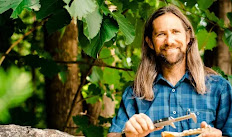











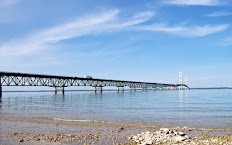





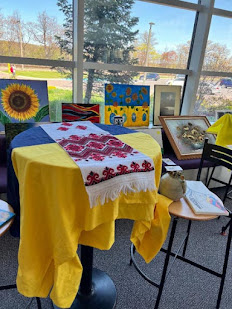

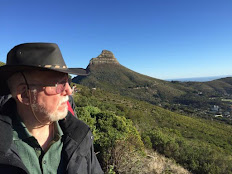










































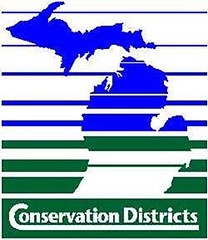

































No comments:
Post a Comment